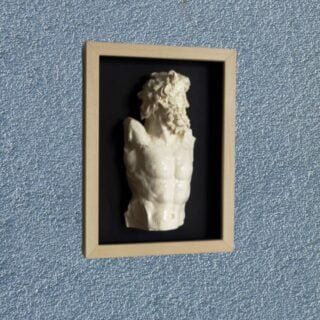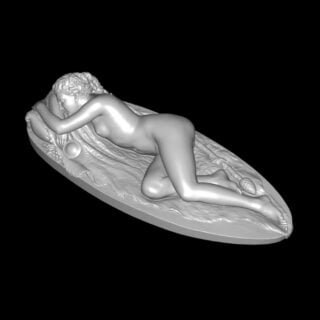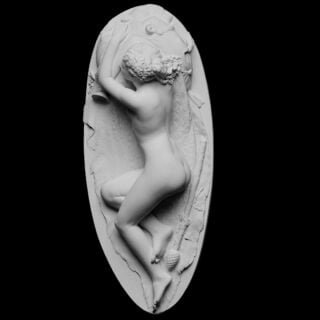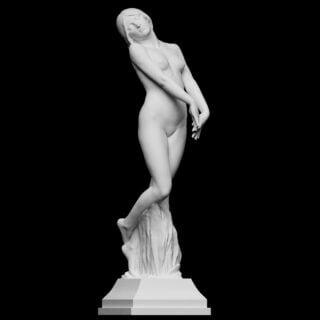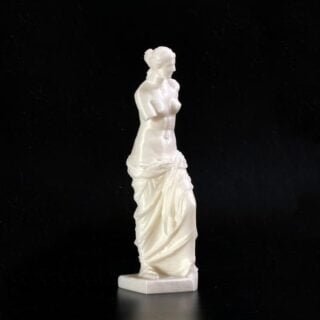Tag: Goddess of love
Showing all 6 results
- Select options This product has multiple variants. The options may be chosen on the product page
This is a custom option for different roman and greek sculptures to decorate your wall. All the sculptures are either museum replicas or inspiration, remember before ordering you must share the link to the scanned copy of the sculpture else the image of the statue you want. The order depends upon the availability of the …
- Select options This product has multiple variants. The options may be chosen on the product page
This is a high-quality 3D printed replica of Sleeping Bacchante
In Greek mythology, Bacchantes were the female followers of Dionysus. The name literally translates as “raving ones”, often portrayed as inspired by Dionysus into a state of ecstatic frenzy through a combination of dancing and intoxication.
In art, Bacchantes are depicted either dancing or sleeping. They are often dressed in fox-skin, the penchant of their God. In this sculpture by Johan Peter Molin, the sleeping female is resting on a fox-skin, surrounded by empty chalices and grapevines.
Made from Resin PLA bioplastic. The statue comes in 4 size options:
- Select options This product has multiple variants. The options may be chosen on the product page
Using a high-precision 3D scanner, we got a high-quality 3D model of a real Sleeping Bacchante. Using modern technologies for 3D printing, we have repeated the Sleeping Bacchante. Now you can put up a Sleeping Bacchante in your home.
This robust torso was purchased in 1778 by the Grand Duke of Tuscany Peter Leopold from the Gaddi collection, which was located in Florence; nothing is known of the work prior to this date, except that it was part of the above-mentioned private collection.
In Greek mythology, Bacchantes were the female followers of Dionysus. The name literally translates as “raving ones”, often portrayed as inspired by Dionysus into a state of ecstatic frenzy through a combination of dancing and intoxication.
In art, Bacchantes are depicted either dancing or sleeping. They are often dressed in fox-skin, the penchant of their God. In this sculpture by Johan Peter Molin, the sleeping female is resting on a fox-skin, surrounded by empty chalices and grapevines.
- Select options This product has multiple variants. The options may be chosen on the product page
This is a high-quality 3D printed replica of Sleeping Bacchante
In Greek mythology, Bacchantes were the female followers of Dionysus. The name literally translates as “raving ones”, often portrayed as inspired by Dionysus into a state of ecstatic frenzy through a combination of dancing and intoxication.
In art, Bacchantes are depicted either dancing or sleeping. They are often dressed in fox-skin, the penchant of their God. In this sculpture by Johan Peter Molin, the sleeping female is resting on a fox-skin, surrounded by empty chalices and grapevines.
Made from Resin PLA bioplastic. The statue comes in 4 size options:
- Select options This product has multiple variants. The options may be chosen on the product page
This is a high-quality 3D printed copy of The Mist Statue:
The woman just got out of the water. The sculpture depicts mist, in folklore a natural phenomenon symbolizing a state between the real and the unreal. The actual motif, though, is the naked female body. It is a real woman expressing pleasure, and not ideal beauty, exposed to the viewer’s gaze. The Mist was very popular and several copies were made. One is at Strömparterren in Stockholm and another in the park of the Garden Society of Gothenburg.
- Select options This product has multiple variants. The options may be chosen on the product page
Venus (Aphrodite) is the goddess of love. She was depicted in the nude or in various stages of nudity (and painted). The figure is executed in the Hellenistic style and famed for its sensuous appearance. It supposedly lost its arms in a struggle arising between two groups of soldiers who sought to claim it as loot when it was first discovered on the island of Milos. The statue’s fame is partly the result of propaganda. It was discovered in 1820 and acquired by the French state shortly after Napoleon’s fall in 1815, at which point the French had to return another Venus figure, the Venus Medici (KAS1241) to Italy after Napoleon had seized it as spoils of war.
To compensate for their loss the French promoted the Venus de Milo as the loveliest of all antique statues of women. An Englishman even commissioned a plaster cast as early as 1822, despite the fact that the French and the English were arch-enemies at the time, and today the statue remains far more famous than the Venus Medici.

